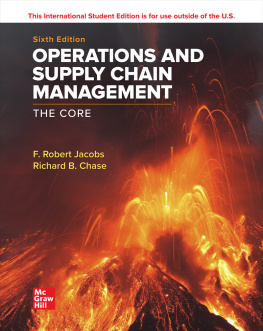
THE FASHION BUSINESS
This book provides a clear understanding of the different business strategies and models across all markets of the fashion industry.
Providing a holistic and practical approach to strategic fashion management and marketing, the book covers brand image, supply chain, communication, price point and social media. Based on examples from international organisations including Off-White, Nike and Zara, as well as leading luxury brands the author identifies 13 core market sectors and explores the strategies applied in each: from creativity to their supply chain and sustainability, from segmentation strategy to brand policies and from pricing to distribution. Each chapter includes features to aid student learning, including interviews with a wide range of experts from across the industry as well as student activities and reflection points.
Theoretically grounded yet practical in its approach, this is important reading for advanced undergraduate and postgraduate students of Strategic Fashion Management, Fashion Marketing and Communications, Fashion Merchandising and Luxury Fashion.
Dario Golizia is a visiting lecturer at IULM University and a senior lecturer in Fashion Marketing Strategies at Istituto Marangoni, both in Milan, Italy.
First published 2022
by Routledge
2 Park Square, Milton Park, Abingdon, Oxon, OX14 4RN
and by Routledge
605 Third Avenue, New York, NY 10158
Routledge is an imprint of the Taylor & Francis Group, an informa business
2022 Dario Golizia
The right of Dario Golizia to be identified as author of this work has been asserted by him in accordance with sections 77 and 78 of the Copyright, Designs and Patents Act 1988.
All rights reserved. No part of this book may be reprinted or reproduced or utilised in any form or by any electronic, mechanical, or other means, now known or hereafter invented, including photocopying and recording, or in any information storage or retrieval system, without permission in writing from the publishers.
Trademark notice: Product or corporate names may be trademarks or registered trademarks, and are used only for identification and explanation without intent to infringe.
British Library Cataloguing-in-Publication Data
A catalogue record for this book is available from the British Library
Library of Congress Cataloging-in-Publication Data
Names: Golizia, Dario, 1966 author.
Title: The fashion business: theory and practice in strategic fashion management / Dario Golizia.
Description: Milton Park, Abingdon, Oxon; New York, NY: Routledge, 2021. | Includes bibliographical references and index.
Identifiers: LCCN 2021002071 (print) | LCCN 2021002072 (ebook)
Subjects: LCSH: Fashion merchandising. | Clothing tradeManagement. |
Clothing tradeMarketing.
Classification: LCC HD9940.A2 G65 2021 (print) | LCC HD9940.A2 (ebook) | DDC 746.9/20684dc23
LC record available at https://lccn.loc.gov/2021002071
LC ebook record available at https://lccn.loc.gov/2021002072
ISBN: 978-0-367-49053-9 (hbk)
ISBN: 978-0-367-49055-3 (pbk)
ISBN: 978-1-003-04424-6 (ebk)
Typeset in Bembo
by codeMantra
This is a much-needed contemporary academic book related to fashion business that has excellently managed to critically examine and precisely dissect the challenging retail environment At first I read the whole book in one sitting, but I knew immediately that I would return repeatedly to refer back to key sections for future research. This is a book I would wholeheartedly recommend to current fashion industry experts across the globe, and of course to the future fashion business leaders: our students.
Sally Heale,
Senior Lecturer, University of Westminster, UKThis is a comprehensive and much-needed new text on the theory and practice of strategic fashion management that is highly suited to students wishing to investigate this subject in significant depth. The author identifies thirteen core fashion market sectors, exploring the strategies applied in each. What stands out is the critical approach, in-depth comparative analysis and the additional input from a superb selection of contributing authors.
Harriet Posner,
Director Undergraduate Programmes, Cond Nast
College of Fashion & Design, UKWhich are the most successful fashion companies? What business models have they implemented? How are they facing the challenges of the near future? Is there only one successful business model in the fashion industry? Or are there several?
The book aims to give concrete answers to the above questions through the experience of the author, and by means of interviews with industry professionals, as well as of an analytical research of about 50 international companies.
Currently, there are many fashion business books, none of which focuses on business models. Moreover, they do not identify the different strategic groups competing in the fashion industry, and each uses a different business model. Consequently, these texts do not highlight the differences among the creative, productive, segmentation, marketing, communication, distribution and omnichannel strategies, which are specific for each cluster and their companies.
But are the strategies applied by LVMH really similar to those adopted by Herms or Giorgio Armani? Furthermore, is the strategy chosen by the Armani Priv haute couture line similar to that applied by the same company for the Armani Exchange line? The answer is absolutely not.
When analysing the fashion industry, generalising makes no sense. We cannot largely describe a strategy at every level unless we first identify the different clusters and their companies belonging to the fashion industry. There are many (too many) differences within the Fashion System: it is a hypercompetitive sector with hundreds of companies, but only few of them achieve excellent results.
The features that distinguish the book are the following:
it gives a new perspective to segment the fashion industry, adopting a new and different approach;
it identifies 13 typologies of strategic groups, each one applying a different business model, which are the following:
large unspecialised fashion companies (Chapter 2);
historic fashion brands (Chapter 3);
contemporary fashion brands (Chapter 4);
industrial fashion brands (Chapter 5);
fast fashion brands (Chapter 6);
emerging brands specialising in ready-to-wear (Chapter 7);
brands specialising in formal menswear (Chapter 8);
brands specialising in casualwear (Chapter 9);
brands specialising in underwear (Chapter 10);
brands specialising in activewear (Chapter 11);
brands specializing in streetwear (Chapter 12);
brands specialising in bags (Chapter 13);
brands specialising in footwear (Chapter 14);
it identifies the main players of each strategic group;
it describes every strategic group, in a dedicated specific chapter, through an overall exhaustive vision: from creativity to their supply chain and sustainability; from segmentation strategy to brand policies; from pricing to distribution, with a strong focus on omnichannel;
finally, each chapter begins with a reading describing one of the several professional figures of fashion companies, to then conclude with an interview with a protagonist of the cluster and student activities.
Next page











